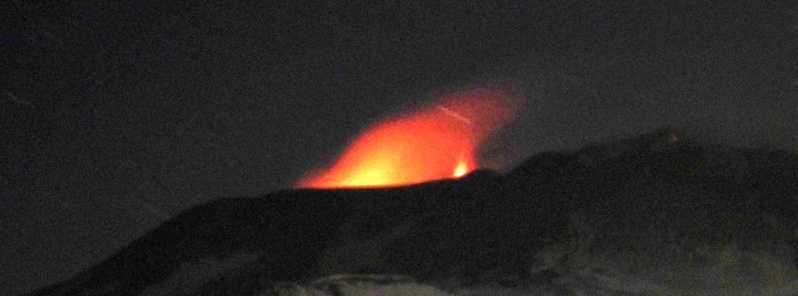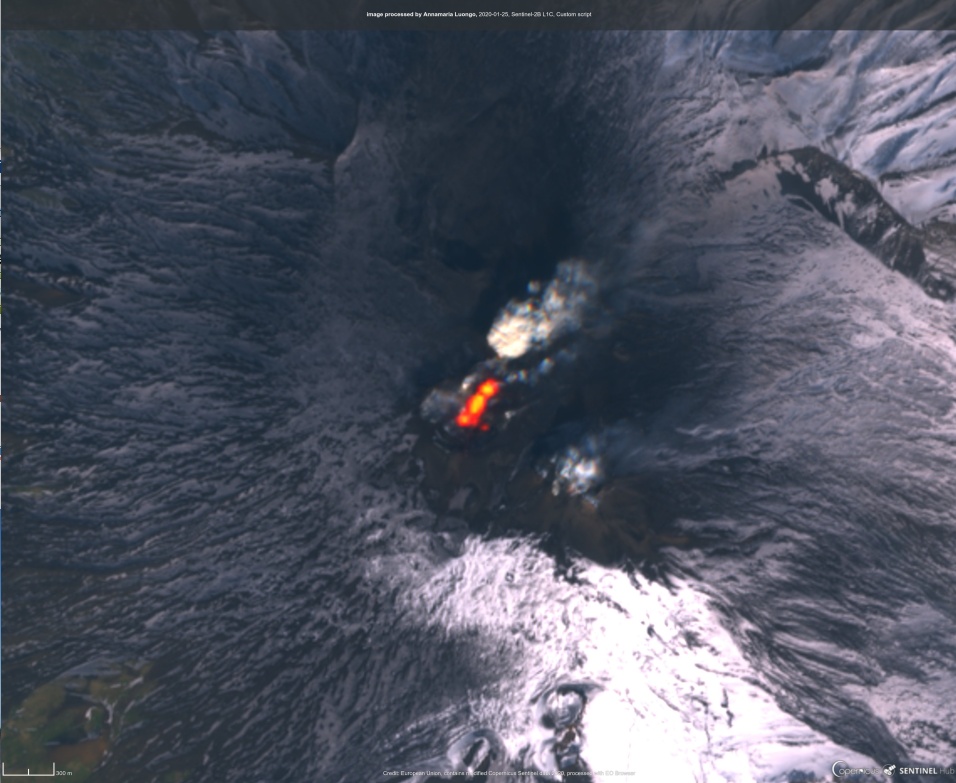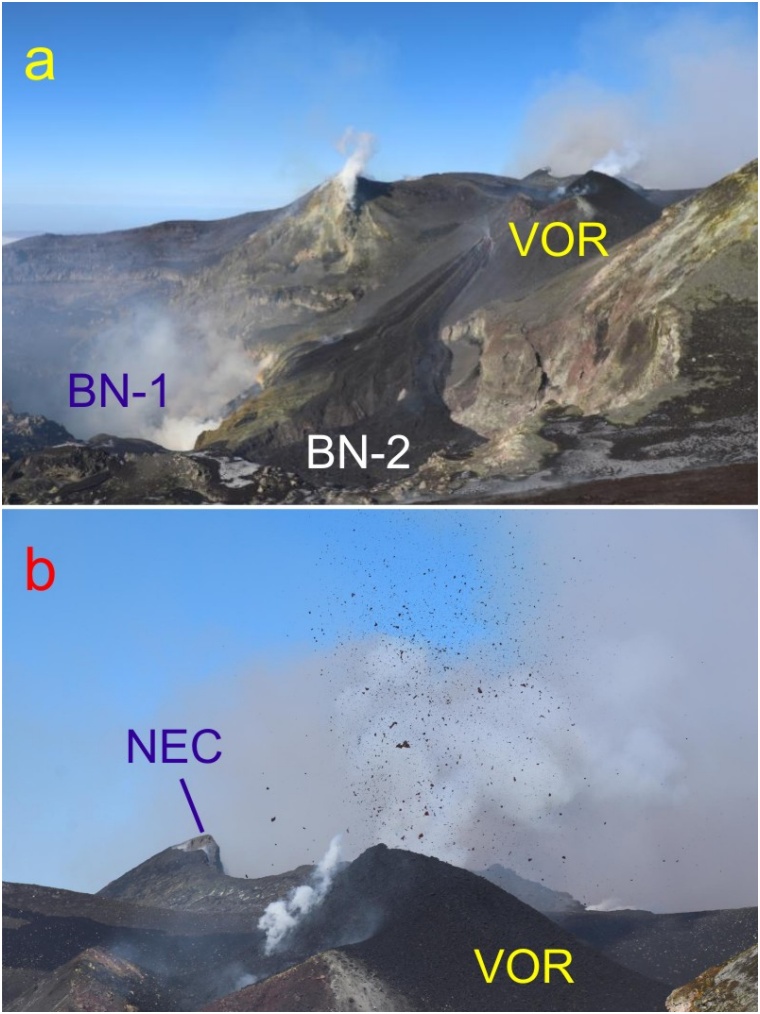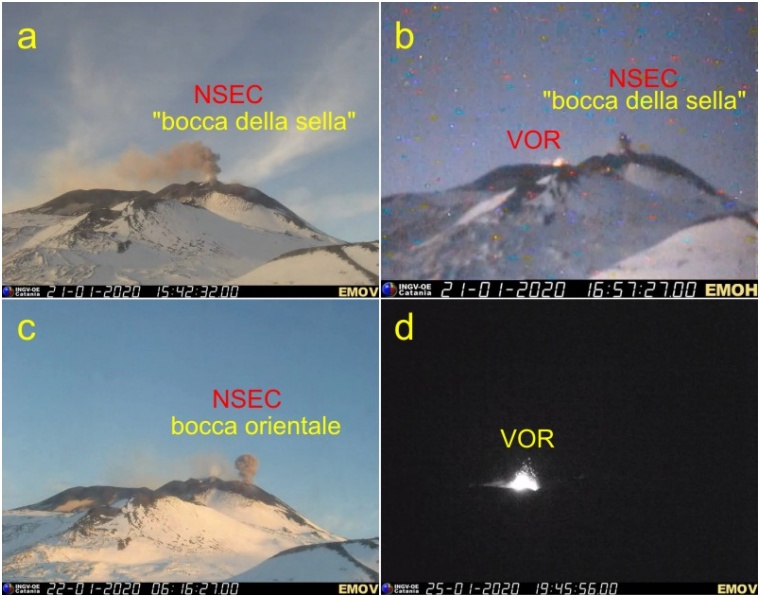Strombolian activity at Etna’s Voragine crater, Italy

Moderate effusive and strombolian activity continues from Etna's Voragine crater on January 29, 2020. From January 20 – 26, this activity was accompanied by ash emissions from the New Southeast Crater and Northeast Crater.
In addition, moderate seismic fracturing activity was observed during the same period, sustained infrasonic activity and medium to low levels os SO2, CO2 and HCl.
Strombolian activity at Voragine increased during the week, leading to a rapid growth of the cone, especially in its northern part. The explosions were only rarely accompanied by mild ash emissions.

At #Etna, eruptive activity is continuing at the summit craters Voragine, Northeast Crater, and New Southeast Crater. First photo taken on 23 Jan 2020; the other images are of the INGV-Osservatorio Etneo surveillance cameras, 21-22 Jan 2020 https://t.co/9VOJtHOyRb pic.twitter.com/04DclBxizh
— Boris Behncke (@etnaboris) January 23, 2020
On January 21 and 22, the New Southeast Crater produced several episodes of modest ash emission from the mouth that opened on December 11, 2019. The episodes lasted a few tens of minutes each, INGV reports.
The Northeast Crater was the site of discontinuous intracraterial Strombolian activity and periodic emissions of very diluted ash.


Etna as seen by Sentinel-2 on January 25, 2020. Credit: Copernicus EMS / Annamaria Luongo


(a) View from the south-eastern edge of the Bocca Nuova towards the Voragine (VOR), with the lava flow which bridged the depression of the BN-2. (b) Detail of the growing VOR cone, seen from the same position. The western edge of the Northeast Crater (NEC) is in the background. The photos were taken by volcanological guide Vincenzo Greco on January 24, 2020.


Eruptive activity at the New Southeast Crater (NSEC) and Voragine. Images by EMOV and EMOH visual surveillance cameras, both positioned on the Montagnola, on the top southern slope of Etna. Credit: INGV
Geological summary
Mount Etna, towering above Catania, Sicily's second-largest city, has one of the world's longest documented records of historical volcanism, dating back to 1500 BCE. Historical lava flows of basaltic composition cover much of the surface of this massive volcano, whose edifice is the highest and most voluminous in Italy.
The Mongibello stratovolcano, truncated by several small calderas, was constructed during the late Pleistocene and Holocene over an older shield volcano. The most prominent morphological feature of Etna is the Valle del Bove, a 5 x 10 km (5.1 x 6.2 miles) horseshoe-shaped caldera open to the east.
Two styles of eruptive activity typically occur at Etna. Persistent explosive eruptions, sometimes with minor lava emissions, take place from one or more of the three prominent summit craters, the Central Crater, NE Crater, and SE Crater (the latter formed in 1978). Flank vents, typically with higher effusion rates, are less frequently active and originate from fissures that open progressively downward from near the summit (usually accompanied by strombolian eruptions at the upper end).
Cinder cones are commonly constructed over the vents of lower-flank lava flows. Lava flows extend to the foot of the volcano on all sides and have reached the sea over a broad area on the SE flank. (GVP)
Featured image credit: INGV

Commenting rules and guidelines
We value the thoughts and opinions of our readers and welcome healthy discussions on our website. In order to maintain a respectful and positive community, we ask that all commenters follow these rules:
We reserve the right to remove any comments that violate these rules. By commenting on our website, you agree to abide by these guidelines. Thank you for helping to create a positive and welcoming environment for all.